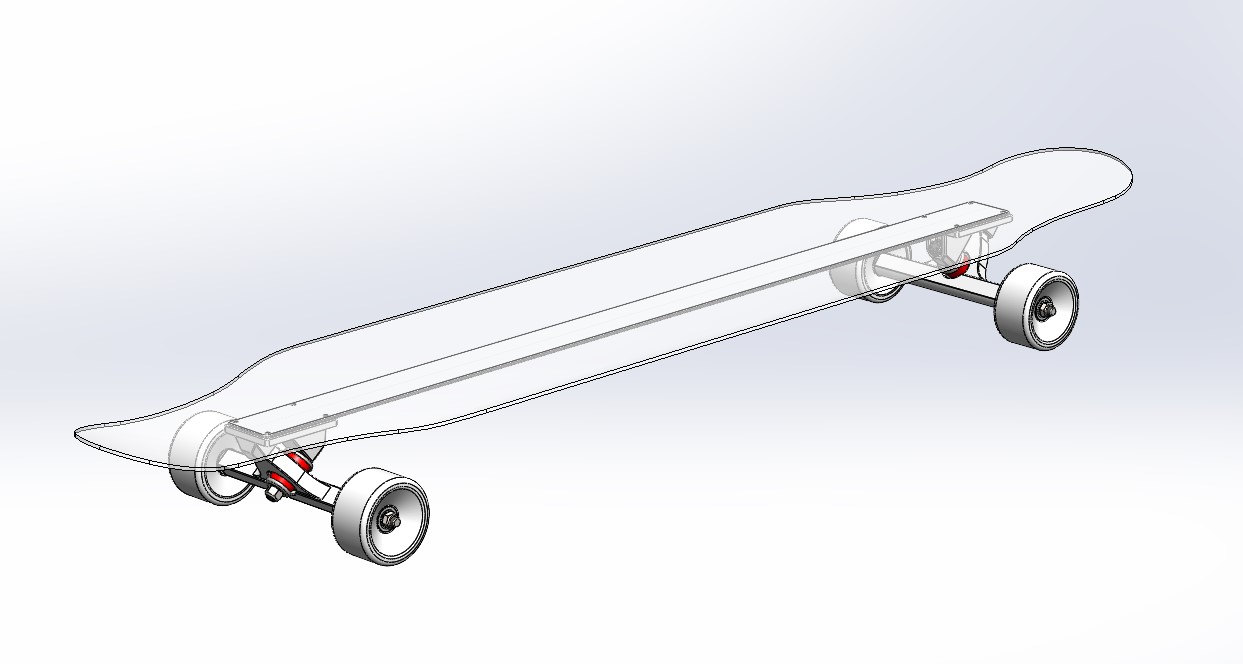Specifications:
- The board needs to be functional / rideable. A huge part of the whole design is for it to be a real (rideable) longboard, not just something that you hang on the wall.
- It needs to be durable enough to not crack when riding it. This may seem obvious and go hand-in-hand with the previous specification, but I don’t want to only ride it once and then have it break. It needs to be durable enough that I can trust it to not break in half if I hit a small bump while going 30mph.
- The deck needs to have some flex. Since I am using non-conventional materials (clear plastic and metal) for the deck, there is a very high chance that the deck will be very rigid if not properly designed. Traditional decks are often bamboo, which is very springy. I don’t expect the deck to have a comparable level of springy-ness, but it will not suffice if there is no flex at all.
- The deck needs some concave / 3D dimensions to it. This is for primarily functional reasons. The edges of a longboard deck typically bend up a little bit. This makes it easier to turn and to not slip off of. For the tail and nose, the curvature of the deck makes ground tricks possible.
- Primary colors will be white and clear. This is to achieve the intended aesthetic. Any other parts that are not white or clear should be painted white or be so minimal it is hard to tell.
Constraints:
- The project shall be complete by April 20th at 11am. This is the required due date for the course.
- The board shall be 44″ +- 5″ in length. This is to keep the board within an acceptable length of a longboard. I am aiming for 48″ but there will need to be some variation to allow for other design constraints that may arise.
- The length of the deck is limited by the length of plastic I can buy at a local store. I certainly could order specific plastics from online, but the time and shipping fees required to make that happen are not feasible for this project. I will need to source the polycarbonate from a hardware store or local plastics store if available.
- Total price not to exceed $200. Several of the parts are ~$50 each so it is possible that this could become very expensive if not careful. It would also be possible to use more than the total budget just trying to get the deck right, but I want to keep the costs relatively low. I am justifying the price tag of the project with the hopes that I can use the board afterwards instead of buying another one.
- The edges of the deck shall be smooth. I may end up having to cut the polycarbonate with a jigsaw, which could create a rough edge. I am adding this constraint because I don’t want to have to worry about slicing my hand on the edge of the board if the edge it rough / sharp.


2 Comments. Leave new
Brayden,
Bushings and bearings can make a world of difference on a set up once this is finished, I would recommend spending money on getting a low durometer bushing set up and higher quality bearings over “nice trucks” and wheels, those are more costly and generally less worth it.
Hey Brayden, your project seems to be coming along pretty well! Since you’re using polycarbonate for the deck of the long board, I’m curious as to how you’re going to make the edges of the deck bend up like in your 3d model? From my experience using polycarbonate, this seems like a very difficult process.